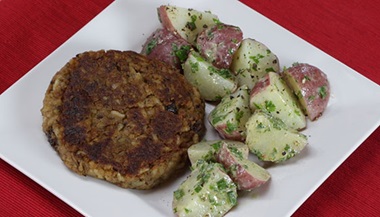Weight Loss and Diet
Featured Expert:
The Effect of Extra Weight on the Heart
Obesity plays a role in many of the risk factors that lead to heart disease. Obesity can:
- increase the risk of diabetes
- cause or worsen hypertension
- raise bad cholesterol (LDL) and triglycerides, and reduce good cholesterol (HDL)
- produce substances that cause inflammation in the blood vessels, which can lead to heart disease
"Keeping weight under control can reduce many of the risk factors for cardiovascular disease," cardiologist Dr. Roger Blumenthal says.
Low-Carb Diets vs. Low-Fat Diets
While a low simple-carbohydrate or very low-fat diet can help you lose weight, the relative merits of each of these types of diet on the cardiovascular system are currently being studied. A few important things to remember:
- Avoid foods with trans fat, the processed fats that build up in the arteries.
- Steer clear of high amounts of sugar and salt.
- Control your portions and take in less calories than you burn.
- Develop the self-discipline and motivation to stick to your healthy lifestyle patterns.
The Good Fat
Some fats are considered healthy because they’ve been shown to reduce the amount of low-density lipoprotein (LDL) cholesterol in the blood. These are the unsaturated fats (polyunsaturated and monounsaturated).
Omega-3 fatty acid is a type of polyunsaturated fat that helps reduce inflammation in the arteries. You’ll find it in fatty fish such as salmon, mackeral, trout, albacore tuna and sardines. Other sources of healthy fat are beans, and nuts such as walnuts, pecans, almonds and hazelnuts.
The Mediterranean Diet
While there is no single diet that can represent the many cultures that make up an entire region, there is good data to support adoption of the Mediterranean diet.
This type of diet incorporates naturally healthy foods and living habits such as:
- frequent helpings of fruits and vegetables
- going light on red meat and consuming more fish
- grainy breads spread with olive oil instead of butter
- herbs and spices in place of salt
- exercise and small relaxed family meals vs. no exercise and bigger solo meals
Tips for Sticking to a Weight-Loss Diet
It is a daily challenge to stick to any kind of weight-loss plan, but you can acquire certain habits that make it easier.
Eating and exercise habits are greatly affected by your social network. You’re more likely to exercise and eat smaller portions if you spend time with people who do the same, and vice versa. So choose to spend more time with fit and healthy friends, and get your immediate family to join you and support your healthy habits.
Other ways to stick to a weight-loss plan include:
- Keeping daily food records and logs; programs and examples are easy to find on the web.
- Weighing yourself one to two times a week to keep your goals in front of you.
- Making sure your goals are specific and within reach (e.g., “lose X pounds this month” vs. “get thin”).
- Treating yourself to something special each time you reach a milestone.
Making a Diet More Effective with Exercise
Eating lower-calorie foods and smaller quantities of them are vital to losing weight. But the additional calories that exercise helps you burn make it easier to be on the right side of the calorie equation.
Working light-to-moderate weight training into an exercise program that already includes aerobic activity (walking, jogging, cycling) adds lean muscle mass. Calories are energy that is stored in the form of fat. Muscle is the body’s engine. So the more muscle you have, the more calories you use each day, which contributes to fat loss.
Is there such a thing as ideal body weight?
Ideal body weight is just a rough guide. A more accurate gauge of ideal weight is body fat composition. Body fat norms vary by age and gender. At any age, a woman’s body is composed of more fat than a man’s.
The ideal body fat percentages are approximately 22% body fat for women and 15% for men.
Measuring Body Fat
A very accurate measure of body fat and bone density is a DEXA scan, an X-ray that separates muscle and fat from bone, but this is mainly done in the clinical research setting.
BMI (body mass index) measures the ratio of height to weight. According to the American Heart Association:
- BMI under 18.5 is considered underweight
- BMI in the range of 18.5-24.9 is considered healthy
- BMI between 25 and 30 is considered overweight
- BMI of 30 or higher is considered obese
Acquiring your body mass index is easy. Just search online for “BMI calculator” and enter your height and weight.
Muscle-Fat Composition Changes as You Age
Over time, we tend to lose muscle tissue. It’s a normal condition called sarcopenia. For example, if you weigh the same at age 60 as you did at age 20, your fat content is still higher because you’ve lost muscle mass.
According to Blumenthal, “One way to lessen the degree to which you lose muscle is to make aerobic exercise and moderate weight training a lifelong habit.”
Johns Hopkins Women's Cardiovascular Health Center






